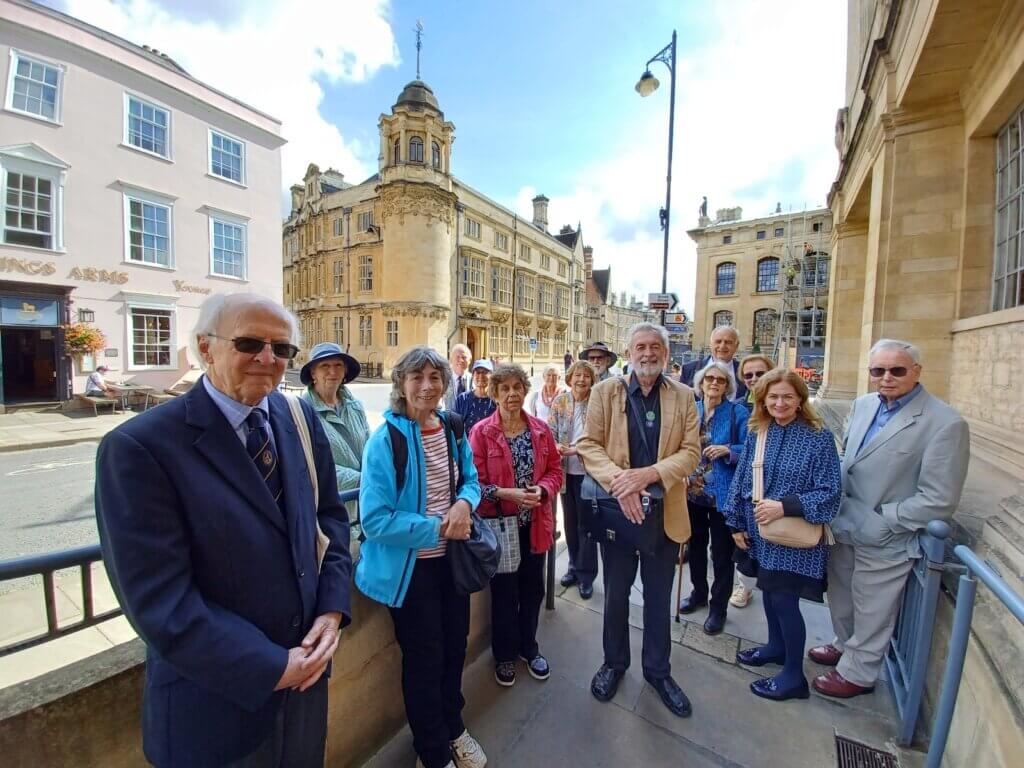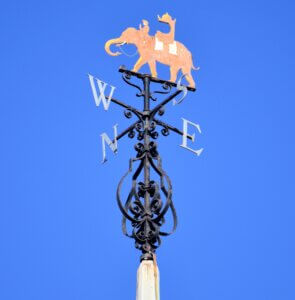13 September 2023
Around 16 BACSA members recently spent a fascinating day in Oxford, exploring historical links between the city and South Asia.

(Photo: Meryl Balchin)
We began with a walking tour led by Oxford Tour Guide Rob Walters, whose book ‘Stars of South Asia from Oxford’, traces the impact of the city on several distinguished men and women from India, Pakistan, Sri Lanka, Bangladesh, Nepal, Bhutan and Myanmar, all of whom, at some point in their lives ‘left the gopura and onion domes of home for the dreaming spires of Oxford’.
Scholars from the Indian subcontinent have been studying at Oxford since the 1870s. Many became household names – the list includes several future Prime Ministers (Indira Gandhi, Manmohan Singh, Zulfikar Ali Bhutto, Benazir Bhutto, Solomon Bandaranaike), as well as notable political campaigners (Tariq Ali, Malala Yousafzai) writers (Ved Mehta, Vikram Seth, Monica Ali), sportsmen (Iftikhar Ali Khan, Imran Khan) and numerous others.
In the peaceful atmosphere of Balliol College Chapel Rob paused to give us an introductory talk on their experiences – outlining, for example, the hurdles overcome by the pioneering lawyer Cornelia Sorabji (the first Indian woman to study at an English university; becoming, in 1892, the first woman to complete a law degree at Oxford University).

(Photo: Roger Marks, Museum of Oxford
Pointing out the college buildings and other landmarks which formed the backdrop to all Oxford students’ lives, Rob then led us to the premises formerly occupied by the Indian Institute. Opened by the Vice Chancellor, Benjamin Jowett, in 1844 to provide training for the Indian Civil Service, the building features a corner cupola topped by an impressive windvane in the shape of an Indian elephant – complete with howdah and mahout.
From there we made our way to the Ashmolean Museum for lunch in the rooftop restaurant – which gave us an excellent opportunity to view many of the buildings and landmarks we could now identify.
Our afternoon programme at the Ashmolean began with a lecture by Prof Mallica Kumbera Andrus, Keeper of Eastern Art, on the Museum’s comprehensive Indian collections, gradually assembled since 1686, when Sir William Hedges, agent and governor of the East India Company, presented the University with a Bengali stone sculpture of Vishnu.
Founded in 1683 to house the ‘cabinet of curiosities’ bequeathed by Elias Ashmole, the Museum building was substantially redeveloped in 2009. Prof Kumbera Andrus drew our attention to the way the current layout of the Museum, in particular the proximity of the Classical and oriental collections, enhances our understanding of global history through the flow of cultural concepts along established trade routes between Greece, Rome, India and China.
We were then taken on a tour of the Indian galleries, guided, with unforgettable passion, by Denise Derbyshire. Starting in the Kreitman Gallery (‘India to AD600’), Denise explained how the archaeological excavations of the Indus Valley in the 20th century had led to a complete rethinking of Western understanding of civilisation in 2,000 BC. She then led us enthusiastically through the later galleries, inspiring us to ‘read’ the sculptures by focusing initially on their visual impact, then decoding any inherent symbolism, and considering the objects in their cultural context. Our tour finished in the Mughal India gallery, where we were encouraged to think about the individual craftsmen (and women) who created, designed and worked on the beautiful carpets, ceramics, metalwork and textiles on display.
Much too soon the afternoon drew to a close, and many of us vowed to return soon and spend more time viewing the collections with opened eyes and renewed understanding. Our thanks are due to Rosemary Raza, BACSA, for organising such an impressive programme for the day; to Rob Walters our tour guide, for his many insights, and to Prof Mallica Kumbera Andrus and Denise Derbyshire of the Ashmolean Museum for their memorable introduction to the Indian collections.
